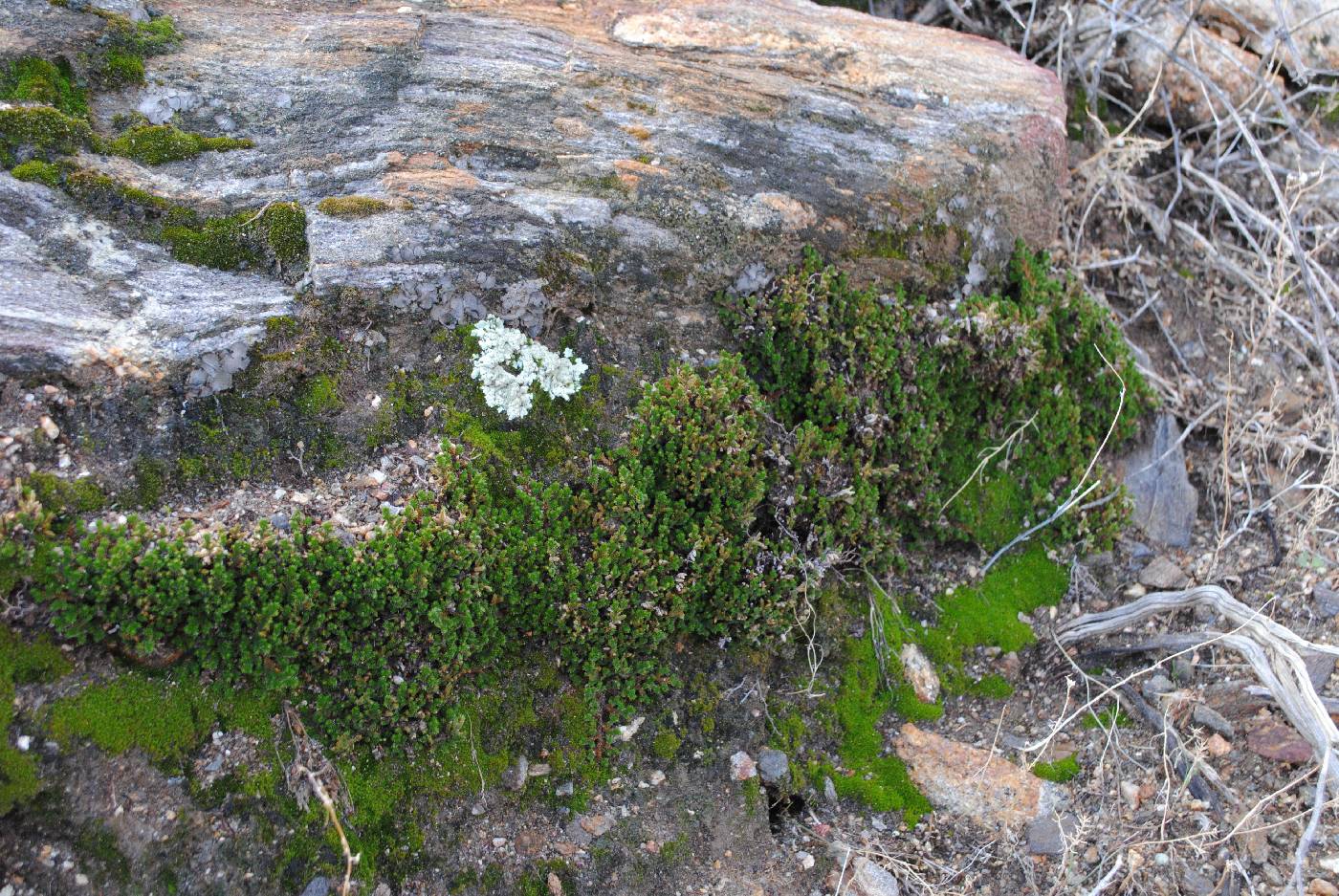
|
Selaginellaceae |
|
|
Plants herbaceous, annual or perennial, sometimes remaining green over winter. Stems leafy, branching dichotomously, regularly or irregularly forked or branched, protostelic (sometimes with many protosteles or meristeles), siphonostelic, or actino-plectostelic. Rhizophores (modified leafless shoots producing roots) present or absent, geotropic, borne on stems at branch forks, throughout, or confined to base of stems. Leaves on 1 plant dimorphic or monomorphic, small, with adaxial ligule near base, single-veined [rarely veins forked]. Strobili (clusters of overlapping sporophylls) sometimes ill-defined, terminal [lateral], cylindric, quadrangular, or flattened. Sporophylls (fertile leaves) monomorphic or adjacently different, slightly or highly differentiated from vegetative (sterile) leaves. Sporangia short-stalked, solitary in axil of sporophylls, opening by distal slits. Spores of 2 types (plants heterosporous), megaspores (1--2--)4, large, microspores numerous (hundreds), minute. Selaginellaceae traditionally include only one genus of living plants, Selaginella (A. C. Jermy 1990b; R. M. Tryon and A. F. Tryon 1982). Some authors (O. Kuntze 1891--1898, vol. 2, pp. 824--827; W. Rothmaler 1944), however, have segregated other genera based on generic concepts established by A. Palisot de Beauvois (1805, pp. 95--114), who recognized four genera. A. F. Spring (1850) combined the four genera into the broadly defined genus Selaginella . Spring's generic delimitation has resulted in misinterpretations that created many nomenclatural problems and partly led to the continued recognition of only one genus. Nevertheless, species in Selaginella fall into at least three well-defined groups, all present in North America, that may be recognized as genera based on anatomy, embryology, morphology and arrangement of the leaves and sporophylls, and morphology and symmetry of the strobilus. North American Selaginellaceae, which represent only a small portion of the family, are treated here in Selaginella , pending a full revision of the family worldwide. Species in the fossil genus Selaginellites Zeller, which dates to the Carboniferous period, presumably are congeneric with Selaginella . Among the fern allies, Selaginellaceae are related only distantly to the other lycopod families, Lycopodiaceae and Isoëtaceae (R. M. Tryon and A. F. Tryon 1982).
PLANT: Perennial herbs in ours with often dichotomously branched stems. ROOTS: adventitious, short, produced from near the tips of modified leafless root-like stems (rhizophores), branched or more commonly unbranched. LEAVES: variously arranged, scale-like, with the venation restricted to a midvein. SPORANGIA: of two types, kidney-shaped to depressed-ovoid, positioned on the adaxial base of leaf-like sporophylls, arranged in strobili terminal on the branches. MEGASPORANGIA: with usually 4 megaspores, these relatively large, trilete, tetrahedral-globose. MICROSPORANGIA: with numerous microspores, these minute, trilete, tetrahedralglobose. GAMETOPHYTES: reduced, developing mostly inside the spores, the archegonia and antheridia protruding from the spore wall. NOTES: 1 genus, 700-750 spp., nearly worldwide. REFERENCES: Yatskievych, G. and M. D. Windham. 2009. Vascular Plants of Arizona: Selaginellaceae. CANOTIA 5 (1): 39-48. |
|
This project was made possible in part by the Institute of Museum and Library Services [MG-70-19-0057-19].
Powered by Symbiota


